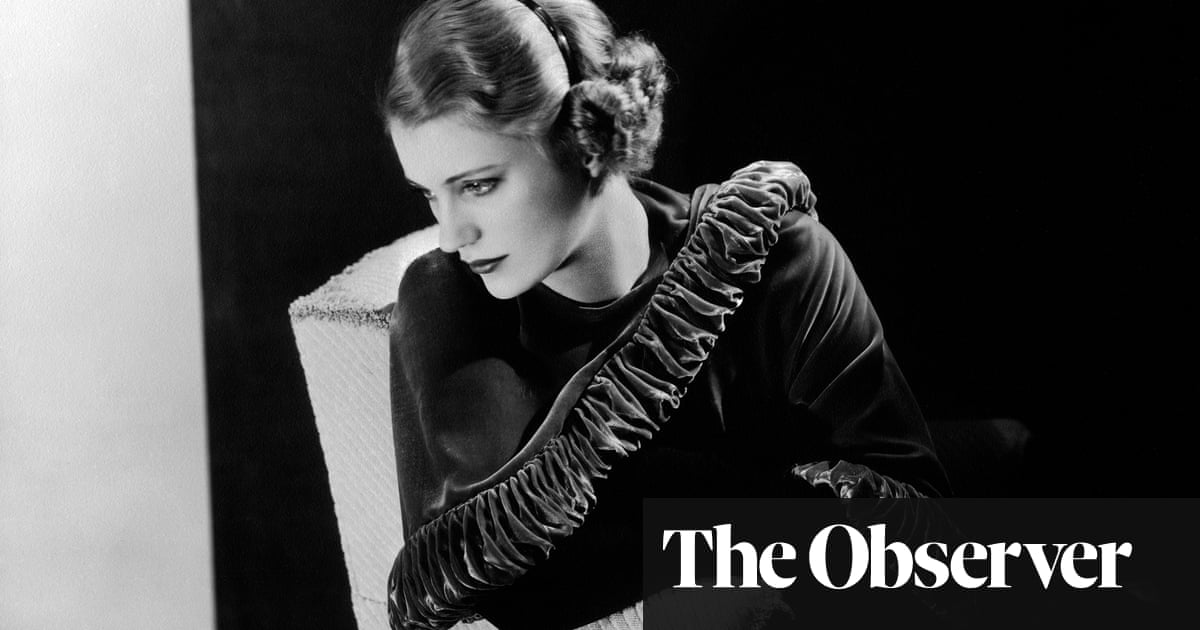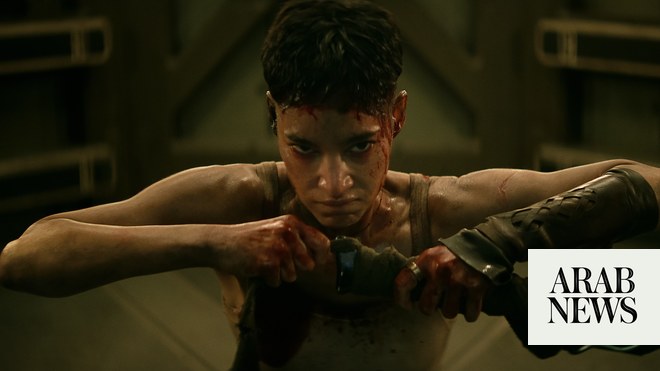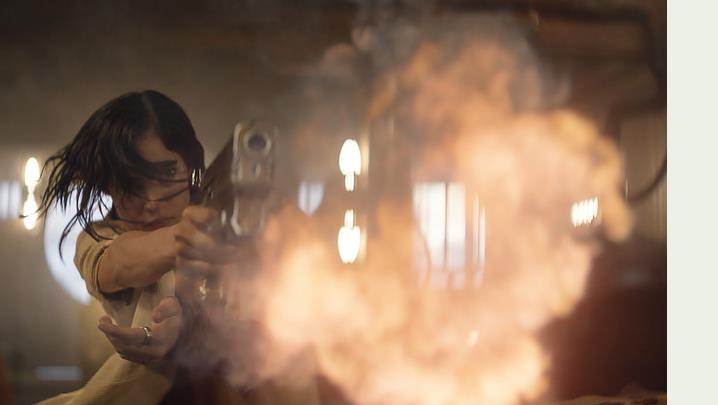
When Ayatollah Khomeini’s theocratic regime took power in Iran 43 years ago, film-maker Kobra Saeedi wouldn’t toe the line. She took part in a protest on International Women’s Day 1979 against the introduction of compulsory hijab – and brought her camera. She was jailed, confined for years in mental institutions, then released into poverty and homelessness.
In Soheila Sokhanvari’s painting Kobra, we see her in her stellar prime, hair uncovered like all the 31 creative, rebellious women of pre-1979 Iran portrayed in this show, a cigarette between her red varnished nails as she looks quizzically out of the painting. As protests against head coverings are again shaking Iran, there’s a disturbing deja vu to discovering what was done to this defiant woman. The death of 22-year-old Mahsa Amini after she was arrested by the Gasht-e Ershad morality police has led to spontaneous demonstrations including school girls giving the middle finger to the image of Khomeini. The women in this exhibition, some of whom died long before the rise of religious rule, now look like the grandmothers of this revolt.
Sokhanvari had no way of knowing how timely her show would be as she painted such women as Roohangiz Saminejad, the first Iranian female lead in a talking picture, and iconic actor and singer Googoosh (Faegheh Atashin). For this beautiful exhibition is the opposite of instant art: a collection of 31 portraits in tempera on vellum in the tradition of Persian miniature painting, each one an act of loving labour. No opportunistic intervention, then. This is a meditative, deeply felt and thoughtful attempt to resurrect a lost world of strong and free Iranian womanhood.
The paintings are displayed without names or biographical info, just painted numbers, in dark frames against the artist’s green mural of interlacing crystal geometries. Golden lighting and the voices of female Iranian singers help create a trancelike atmosphere. The design plays on the mosque and palace decor of Safavid Persia, creating a calm, rapturous ambience in which to contemplate these portraits of female heroes.
Their faces, taken from old photographs, are in black and white. Sokhanvari’s paintings give a Persian turn to the modern tradition of photo-based painting. She does it with a fervent innocence, emphasising the awkwardness of old snapshots, alighting on imperfections to make these women more alive to us. Her painting Mahvash stresses laughing spontaneity rather than smooth good looks, though Mahvash was a sex symbol in the 1950s who was so popular that scenes of her dancing were spliced into American Westerns for Iranian audiences.
These monochrome faces are set in psychedelic bursts of intense colour. Mahvash has a flaming red flower in her hair. Film actor Zari Khoshkam poses on a sofa in a delirious setting, all reds and greens, that’s part 1970s wallpaper, part Persian antique rug.
It’s worth just looking at these paintings, encountering these women, before you find out more. This way you can appreciate them in their glory before finding out their often wretched fates. Then read the full biographies in the printed gallery guide, or by phone-scanning a QR code. Khoshkam, who sits on her 70s sofa with long hair uncovered, in knee-length skirt and boots, was able to carry on acting after 1979 by repenting her past ways and changing her name. Other women in these portraits emigrated: Googoosh, who popularised the miniskirt and a short hairstyle called the Googooshy, lives in LA and is still a recording star at 70.
Others weren’t so lucky. Hugely popular and well paid film star Forouzan admitted her life wasn’t perfect in the sexist Farsi film scene before the Islamic Revolution. As she told an interviewer: “I am tired of standing in front of the camera listening to the director telling me, ‘Be a little sexier, a little more lustful, bring your skirt higher, be a little more inciting and provocative.’” Yet at least she was visible and audible. In 1979 she was thrown in prison and had all her property taken away by the courts. She died unknown, silenced and forgotten.
This exhibition gives these women their visibility back, and in some cases their actual voices as they perform on screen, projected into a giant crystal at the end of the gallery like a pop heaven. Women were banned from singing in 1979: there are still stringent restrictions on the female voice. But you won’t quickly forget the singers whose buoyant or melancholy numbers fill this space.
It all amounts to a utopian vision of another Iran, where women live free, unbound, their individuality irresistible. Perhaps it never was quite so perfect before the revolution – the biographical texts make that plain – but this is a dream of an alternative country. Let’s hope Sokhanvari sees into the future here, as well as the past.












